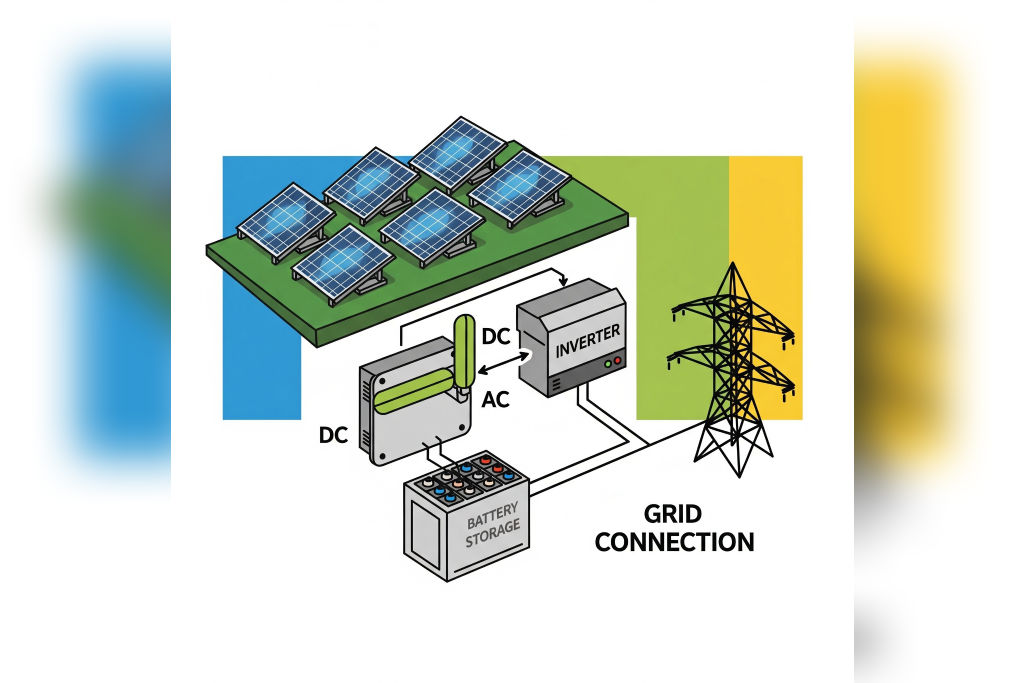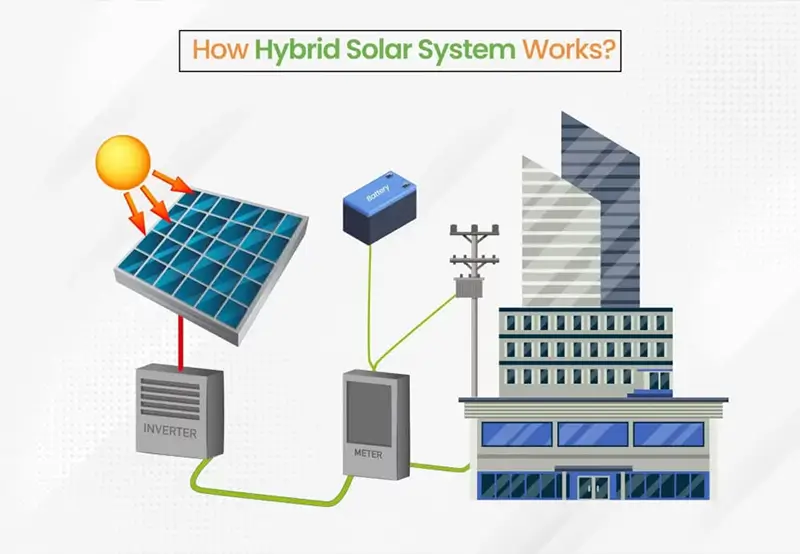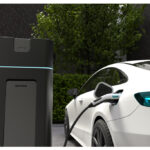What Is a Hybrid Solar System? Benefits & Working
There has never been a greater need for a sustainable energy solution and one of the most effective methods of creating clean electricity has become solar energy. Among the different types of solar power systems, a hybrid solar system is gaining popularity due to its ability to provide uninterrupted power while maximizing energy efficiency. But what is a hybrid solar system exactly? What is it and how does it work and what are the benefits? When you are thinking about exploring the options of switching to solar energy, then learning about the hybrid solar technology would be important in coming up with an informed decision.
A hybrid solar system combines the best of both worlds by integrating solar panels, a hybrid inverter, and a battery storage system. As compared to a traditional, grid-tied solar system and the off-grid system which rely fully on the grid or battery storage respectively, a hybrid system is flexible. You will be able to accumulate surplus solar power during the day and consume it when needed; hence, get electricity throughout when there is an outage.
This blog post will cover how a hybrid solar system works, its benefits, the different types of hybrid solar panels, their pros and cons, and the installation process. We will also discuss the key advantages of hybrid solar systems, helping you decide whether this is the right solution for your energy needs.

What Is a Hybrid Solar System?
A hybrid solar system is an advanced solar power solution that combines solar panels with battery storage and grid connectivity. This system allows homeowners and businesses to generate their electricity, store surplus energy, and use it later when solar production is low. It works seamlessly with the electrical grid, providing a backup energy source during power outages or nighttime consumption.
The core components of a hybrid solar system include:
- Solar Panels: These absorb sunlight and get transformed to electricity.
- Hybrid Inverter: It is a converter which accepts direct current (DC) direct current (DC) produced solar panels and converts it to usable alternating current (AC) at home and controls the charging and discharging of the batteries.
- Battery Storage: Acts as a storehouse where excess solar energy is stored so that less and less energy will be used on the grid.
- Grid Connection: Provides extra energy supply in case solar panels and battery energy are low.
How Hybrid Solar System Works
The working of a hybrid solar system involves multiple steps to ensure energy efficiency and reliability:
- Production of Solar Energy: The solar panels run on sunlight that generates electricity during daytime.
- Energy Distribution: The produced energy is directed to a hybrid inverter, transforming the energy to AC so that it can be utilized by house appliances.
- Battery Storage: In case there is surplus power beyond what is required in real time, it is stored in the battery so as to be utilized later.
- Grid Interaction: When solar generation and stored energy is not enough, the system will get power through the grid.
- Uninterruptible Power Supply: Power works are accompanied by a back-up power supply system, which is in the form of a battery. This enables continuity with regard to electricity supply in the event of power failure.
By intelligently managing energy production and storage, hybrid solar system working ensures energy independence while reducing electricity bills.
Advantages of Hybrid Solar System
Many advantages exist with a hybrid solar system compared to the conventional grid-tied or off-grid systems. Here are some of the key advantages of hybrid solar systems:
1. Uninterrupted Power Supply
Among the important advantages of a hybrid system is that it has a backup power capacity that comes in when there is power failure. This qualifies it as a perfect application in the places that experience frequent electricity outages.
2. Maximized Energy Utilization
In comparison with conventional systems wherein any excess solar generation is diverted to the grid, with a hybrid system some excess power is banked and used at a later time, which results in less grid dependence and high self-consumption.
3. Reduced Electricity Bills
Using stocked solar power, people will be able to weigh their dependency on the costly grid power and save considerably in expenditure in the long-term period.
4. Eco-Friendly Solution
With a reduced reliance on fossil sources and a maximum of clean energy exploitation, the hybrid solar system leads to a green and sustainable future.
5. Smart Energy Management
Modern hybrid inverters come with smart features that allow homeowners to monitor and manage energy consumption through mobile apps, ensuring efficient energy usage.
Types of Hybrid Solar Panels: Pros and Cons
Hybrid solar systems can be equipped with different types of hybrid solar panels, each with its own set of advantages and disadvantages:
1. Monocrystalline Hybrid Solar Panels
- Pros: High efficiency, longer lifespan, space-saving design.
- Cons: More expensive compared to polycrystalline panels.
2. Polycrystalline Hybrid Solar Panels
- Pros: Cost-effective, good efficiency in sunny conditions.
- Cons: Slightly lower efficiency compared to monocrystalline panels.
3. Thin-Film Hybrid Solar Panels
- Pros: Lightweight, flexible, performs well in low-light conditions.
- Cons: Shorter lifespan, lower efficiency.
Installation Process of a Hybrid Solar System
The process of installing a hybrid solar system involves several key steps for it to function optimally:
- Site Assessment: A professional evaluates the site, sunlight exposure, and energy requirements.
- System Design: The energy consumption of the user and the backup requirement are utilized to create a customized hybrid solar system.
- Component Selection: The solar panels, hybrid inverters, and batteries are chosen on efficiency as well as cost considerations.
- Installation of Solar Panels: Solar panels are mounted on rooftops or ground mounts for full sun exposure.
- Wiring & Hybrid Inverter Installation: The system is connected to a hybrid inverter for power conversion and battery management.
- Grid and Battery Connection: The system is linked to the grid and battery storage for ensuring energy availability.
- Testing & Commissioning: The installation is taken through a sequence of tests to ensure operation and effectiveness.
Conclusion
A hybrid solar system is a novel energy solution that can combine solar power, battery storage and grid connection to give us reliable electricity. It enables its users to use as much solar energy as possible and save on power expenses and sustaining power/volta in case of power failure. Improving your knowledge and familiarizing yourself with the working principle of a hybrid solar system, its benefits, and the characteristic features of hybrid solar panels, you may make the correct choice and switch to an environmentally friendly energy source.
As technology spreads and the costs of acquiring solar energy are getting lower, hybrid solar systems are fast becoming a viable option among homes and business establishments. Nowadays, it is a smart and environmentally-friendly investment because by spending some money on buying a hybrid solar system, one may save money on energy in the long-run, as well as reduce his carbon footprint.
Frequently Asked Questions (FAQs)
A hybrid solar system is a combination of solar panels, a hybrid inverter, battery storage, and grid connectivity, allowing for efficient energy use and backup power during outages.
A hybrid solar system captures sunlight through solar panels, converts it into usable electricity, stores excess energy in batteries, and interacts with the grid to ensure continuous power supply.
The key benefits include uninterrupted power supply, reduced electricity bills, optimized energy utilization, eco-friendliness, and smart energy management.
Most hybrid solar batteries have a lifespan of 5–15 years, depending on the type, usage, and maintenance.
A hybrid system offers more flexibility than an off-grid system by allowing access to the grid when needed, ensuring a reliable power source without complete dependence on battery storage.












